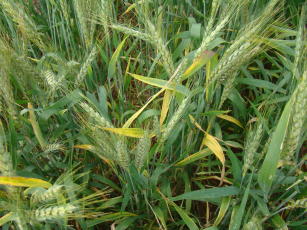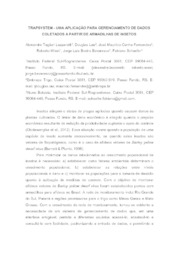Integrated platform for monitoring, simulation and decision-making in the management of epidemics caused by insect-borne viruses
Integrated platform for monitoring, simulation and decision-making in the management of epidemics caused by insect-borne viruses

Photo: LAU, Douglas
Epidemics of Diseases whose Pathogens are Transmitted by Insects (EDTIs) are frequent and impactful in the areas of human, animal and plant health. Due to its complexity, understanding the dynamics of EDTIs requires the accumulation of epidemiological data from monitoring networks and the use of models that establish the chain of relations between their components and calculate, under environmental oscillations, the rate and progress of the biological processes. This project proposes to develop a web-based platform that integrates a data base, host and vector insects simulation models to assist in the management of EDTIs by a friendly decision-making system. The conceptual framework of the platform is generic, but specifically in this project, the target is the yellow dwarf disease epidemics in wheat. This disease is caused by species of Barley yellow dwarf virus transmitted by aphids for winter cereals. Currently, series 2008-2015, the average grain yield damages estimated for this EDTI in wheat are around 20%. Paradoxically, these damages are either underestimated, not being properly controlled, or trigger unnecessary applications of insecticides. In the first case, the reduction of productive potential, together with other factors, results in crops whose grain yield does not cover production costs. In the second, the difficulties to carry out adequate monitoring and the low cost of insecticides result in excessive applications, with a reduction in profit, damage to the environment and human health. The steps planned in the execution of this project are: 1. to establish a network to monitor EDTI (aphids-BYDV in wheat), quantify its impacts to wheat productivity and to evaluate the effectiveness of chemical field management; 2. provide a web-accessible application (Trap System) for input, storage and visualization of data obtained at each of the monitoring network locations; 3. Integrate, on a single platform, the Trap System application and other computational tools such as the AgroDB database, a generic database that will provide the necessary support for the integration between the Cropsim-Wheat wheat culture simulation model and the ABISM insect simulation model; and 4. to simulate the development of aphid populations concomitant with wheat; compare with epidemiological variables obtained at each point of the network; and to test the use of the decision-making platform for insecticide application, optimizing its use in order to protect the productive potential of the crop, increase profit and minimize impacts to the environment and human health.
Status: Completed Start date: Sat Jul 01 00:00:00 GMT-03:00 2017 Conclusion date: Tue Jun 30 00:00:00 GMT-03:00 2020

